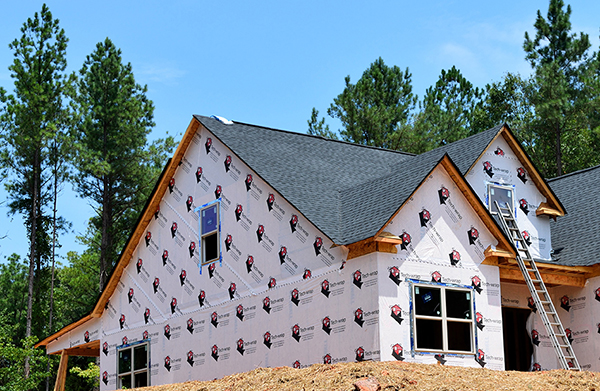News & Advice From the Leading Thousand Oaks Tree Trimming Company
Having some remodeling or major yard work done around your house? Here’s something you may not have thought of: tree damage during construction.
The good news is that with a bit of planning it’s pretty easy to avoid damaging your beautiful trees during your construction project.

First off, you need to know that it may be necessary to remove a tree or two if you have major construction going on. Before you begin, schedule an appointment with an arborist to review the project. They can help you decide which trees can be saved and even meet with the construction company to advise them on working around trees.
There may be more ways that trees can be damaged during a construction project than you imagine. Here are some of the main things to watch out for:
- Bumping Into The Tree
This is an obvious one, but it happens more than it should. Workers may not realize how much damage their equipment can do to the above-ground portion of a tree. It might not seem like breaking branches, tearing the bark or wounding the trunk could kill a tree, but if the damage is extensive, it can. - Cutting Into The Roots
Now we’re getting into damage that is a little harder to control, simply because you can’t see the roots. If your project involves any installation of utilities, there’s like to be some digging, grading or and trenching. That puts roots in danger, because the root system can extend horizontally a distance of anywhere from one to three times the height of a tree. The answer is to cut as far away from the tree as possible. If you end up cutting under the tree’s crown, you can reduce its vitality, and cutting close to the trunk can not only damage its health but also make it tougher to stay standing in a storm. - Compacting the Soil
Here’s a fun fact for you: Ideally, the soil around a tree contains about 50 percent pore space for water and air movement. Here’s another fact — construction equipment is heavy. It can really tamp down the soil, which seriously reduce pore space and which in turn inhibits root growth, limits water penetration and decreases the oxygen the tree needs for survival. - Adding Soil
This might sound like it’s not a problem, but adding too much soil can smother the root system. Much of the root system is actually found just six to 12 inches under ground. That’s the portion that absorbs water and minerals. Packing even a few inches of soil over the root system can smother the small roots, which may eventually result in death of the larger root system. - Exposing Remaining Trees
If you have to remove some trees to make room for your project, the trees that remain may have a tough time adapting. In a natural environment, trees grow in a pattern that protects each other from elements. When some trees are removed, the remaining trees may suddenly be exposed to increased sunlight and wind. That increased exposure can lead to sunburning or breakage of limbs.
Speaking of removing trees, it may be best or necessary to remove some. The ones in the way of any new construction are probably obvious, but others may not be healthy enough to survive or may be in the line of unavoidable damage. That’s where your arborist comes in — we can give you the advice you need for the all trees on your lot, including advice on which ones are more sensitive to compaction, grade changes and root damage.
In any case, getting your arborist and builder together may save you time and money in the end. A little planning up front may be especially valuable if a small change in your construction design makes a difference in whether a critical tree will survive. It’s also a chance to think creatively — maybe a bridge over the root system can work as a substitute for a conventional walkway. Also, routing utilities away from trees may be a solution — and if not, less damaging tunneling and trenching installation techniques might be the answer.
Tree Maintenance Going Forward
It may take your trees months or even years to adjust to injury and environmental changes that happen during construction. They may be more susceptible to disease and insect infestations simply because of the stress incurred during construction.
Don’t worry — give us a call and we can suggest treatments to help reduce stress and improve the growing conditions around your trees, helping to ensure that you’re happy with every aspect of your new construction!

